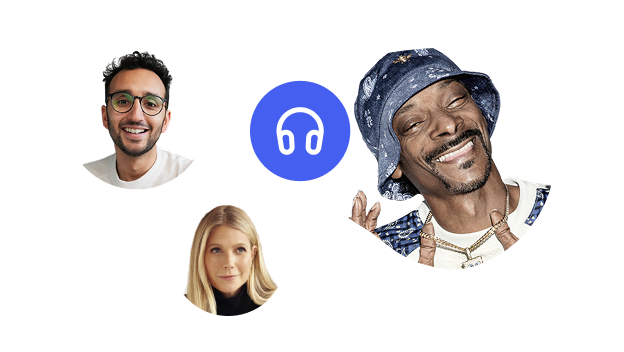When teaching dyslexic students, you can't leave them to their own devices. But besides emotional support, what else can you do for dyslexic children? You can start by implementing assistive tools.
What dyslexia is and how it affects people
Dyslexia is one of the most common learning disorders, influencing how the brain processes information. It prevents sufferers from reading, writing, and remembering things efficiently. Contrary to popular belief, people with dyslexia aren't less intelligent than others. This disability doesn't have to do anything with intelligence. Instead, it is commonly believed to develop due to certain genetic factors and environmental impact. Individuals with dyslexia typically have trouble connecting written words to how they sound. They might excel in math or other subjects, but reading and understanding questions will be more challenging. They have difficulty mastering reading comprehension and dictation assignments too. Some sufferers can also struggle to organize their thoughts. Consequently, they have trouble managing their workload and following instructions. Additionally, people with dyslexia can have difficulty remembering meetings or appointments. They may also misjudge how long particular tasks can take, which is why their time management skills might be more problematic. Furthermore, dyslexic students often struggle with directions. They often feel anxious or get lost when traveling to unfamiliar places. They may find right or left instruction hard to give or follow due to the way their brains are wired.
The importance of tools for dyslexic students
Even though this learning disability can have long-term effects, there are many ways to help dyslexic kids. Primarily, assistive apps and tools (e.g., SmartPen, or spell check and word prediction software) can help them learn to write, read, and master communication skills. Used correctly, various tools can make them realize they've not just been capable of learning – they're capable of achieving great things. Once they understand dyslexia isn't a debilitating condition, they'll be eager to learn. Different tools that can be helpful Teachers, guardians, and medical professionals don't have to rely on their experience only to assist dyslexic students. They can also rely on specific tools available for laptops, iPads, and Android apps. These devices can provide the necessary information in different ways. This versatile approach enables students to learn from methods that work best with their specific conditions and needs. Another great thing about Microsoft, Chrome, iOS, and other technologies is that they're compatible with platforms that read aloud the written content. This way, children can eliminate the anxiety associated with reading assignments. They can access easy-to-understand audio files to boost their comprehension. Here are the most practical dyslexia tools:
Audiobooks
Audiobooks are a popular dyslexia assistive technology. They can help students with word decoding and assigning meaning. They offer information in two ways (audibly and visually), reinforcing word recognition, fluency, vocabulary building, and comprehension skills. Also, audiobooks are perfect because they allow dyslexic children to concentrate on the meaning rather than word decoding. They let them access content above their current levels to stremline learning. Audiobooks alleviate frustration too. They boost confidence by enabling children to read text independently without thinking about catching up to their peers. This contributes to enjoyable classroom activities and can improve note-taking. Finally, audiobooks help dyslexics appreciate literature to build a broad knowledge base. They unlock the door to magical worlds of stories and novels, so they can immerse themselves in high-quality books like their peers.
Assistive technology
In today's tech-driven world, children prefer learning with cutting-edge apps. The same goes for dyslexic students. You can experiment with numerous platforms, but Speechify is hands-down the best choice. This text to speech (TTS) platform turns written content into spoken words through AI-powered voices. Learners can also use the highlighting version to keep up with the text more easily. This is especially important when teaching dyslexic individuals. Speechify makes the life of dyslexics easier because it lets them read without worrying about all the challenges. It enables them to work more effectively, making them highly productive in class. They can understand the materials just as fast when using Speechify. Plus, you can change the speed of the recordings to cater to individual learners. These robust features lift the barriers reading puts up for individuals with ADHD, autism, dyslexia, and other disorders. Other assistive technology that can somewhat mitigate the effects of dyslexia include smart pens and zooming or highlighting software, which allow children to focus on a single word.
Multisensory tools
Another great way to assist dyslexic students is to incorporate multisensory tools. They integrate kinesthetic (movement), tactile (touch), auditory, and visual teaching elements. They activate different brain areas to help children discover the most suitable learning style. It's effective for all groups, but it particularly works great for dyslexic persons. Rather than reading, they can use other types of input to learn content. The multisensory approach is highly versatile. You can use it in virtually any subject, from math and science to drama and English (or even other languages).
Flashcards or apps that use flashcards
Flashcards can work wonders for dyslexic learners. As previously mentioned, their brains don't like learning by reading traditional textbooks. The flashcard method builds on this principle of special education. Flashcards deliver information in short, bite-sized bits you can jazz up with colorful pictures and audio. This helps reinvigorate the monotony of text in standard readings. For children, you can set up flashcards to teach numbers, letters or letter sounds, and words. For adults, you can help them acquire complex vocabulary through repetition. How to find the right tools for each student Dyslexic students respond differently to various learning stimuli, but finding the right strategy for each student is hard. Still, you can combine the above methods to personalize your approach:
- Reinforce subject matter with high-quality audio for visual learners.
- Make kinesthetic learners learn through doing or experiencing things (e.g., acting out scenes from books or lessons).
- Allow students to choose the rate of speech when using Speechify.
- Ask learners about their preferred formats, such as PDFs, Google Docs, and emails.
- Incorporate tools and apps that work on all devices, including iPhones and other Apple gadgets, Android smartphones, and Kindle.
Implementing Speechify's text to speech application in the classroom
Speechify isn't meant for professionals only – it's also ideal for classroom learning. The app supports dyslexic students with numerous features. For instance, you can choose the recording speed and input format to accommodate all learners. The platform also lets you choose from realistic AI voices that will make even the most tedious session come to life. Speechify guarantees optimized learning and helps elevate reading skills, especially in dyslexic individuals.




